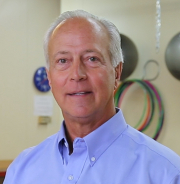Data from Professional Sports Care has shown the frequency of injuries to a golfer's lower back under normal demands of the golf swing. Right handed golfers experience right lower back pain 70-75% of the time; left lower back pain 25-30% of the time. This prevalence is under normal, repetitive use stress of the golf swing. Challenging the body with external factors such as high rough, downhill, uphill and side hill lies will complicate the injury assessment.
Amateur and PGA Tour golfers constantly face the challenge of accuracy off the tee and often face a second shot coming out of high grass. The resistance high grass provides against a club accelerating through the ball at 100-120 mph is difficult to prepare for. The abrupt deceleration presents a physical demand that often results in injury. A right handed golfer facing an abrupt deceleration at impact will frequently experience left lower back pain. The body's momentum is moving forward at a high rate of speed. Any sudden change of force to resist the smooth progression of the swing is a very difficult physical challenge to handle. Many amateur golfers have "chunked" a shot (hitting the ground harder than planned) only to feel a sudden sharp pain in the lead lower back region of their body.
When golfers experience this external stress we have found it to result in strain of the Quadratus Lumborum (QL) and/or deep rotators of the thoracolumbar region on their lead side (in right handed golfers the left lower back, in left handed golfers the right lower back). Ligament sprain has to be considered and handled appropriately in the same areas.
Should the assessment find the injury to be primarily muscle advanced soft tissue procedures such as Active Release and Muscle Activation are very effective. Comprehensive treatment should also include specific clinical exercise for the muscles involved. It is very important to correct this injury as reoccurances are probable since golf performance depends on the rotational capability of the torso.

